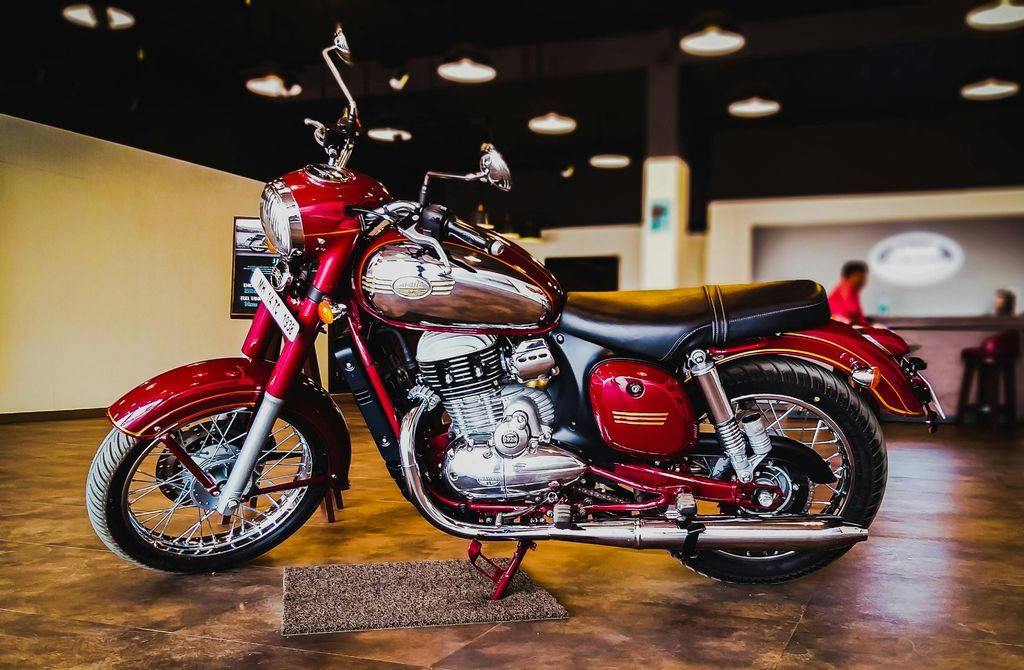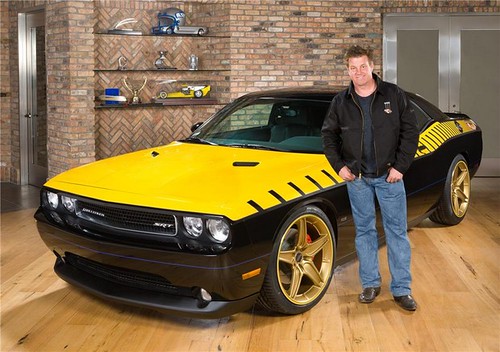
Chip Foose is not just a name in the automotive world; he’s a legend, an artist whose vision has reshaped the very definition of custom car design. For over two decades, whether through his captivating work on “Overhaulin'” or the breathtaking creations rolling out of his garage, Foose has consistently demonstrated an unparalleled ability to take vehicles and elevate them to the realm of true masterpieces. His fixation with hot rods and low-slung performance vehicles is evident in every curve and every meticulously crafted detail, setting a standard that few can rival.
His journey from a young enthusiast sketching cars in his father’s shop to becoming an icon known globally is a testament to relentless passion, an exceptional eye for design, and an unwavering commitment to craftsmanship. Fans and industry experts alike are constantly amazed by his creations, many of which have commanded hundreds of thousands at auction, proving that a Chip Foose design is not just a car, but a valuable piece of automotive art.
In this deep dive, we’ll peel back the layers of Foose’s genius, exploring the pivotal moments, the intricate processes, and the specific vehicles that showcase his transformative power. Prepare to be amazed as we celebrate the genius that is Chip Foose, a true design god who breathes new life into metal, turning the ordinary into the extraordinary.
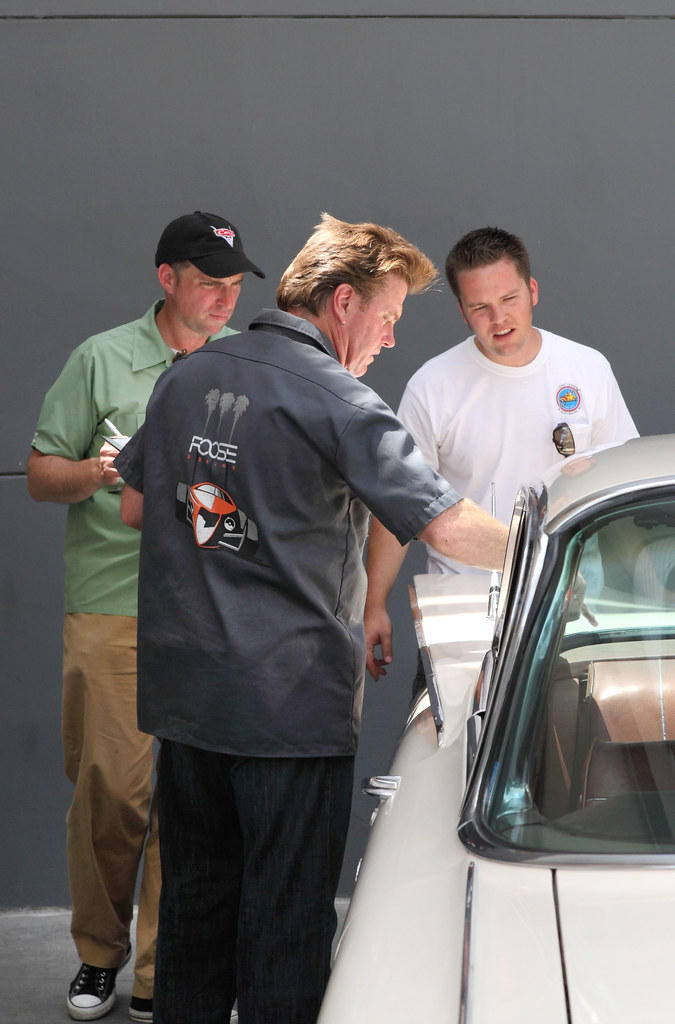
1. **Chip Foose: A Master of Automotive Artistry**When we talk about automotive design, few names command the respect and admiration that Chip Foose does. He is, without a doubt, one of the most notable custom car designers and fabricators around, a true artisan who approaches each project with a blend of creativity, technical expertise, and an almost obsessive attention to detail. His creations are instantly recognizable, bearing the unmistakable hallmark of a master at work.
Foose’s distinctive style is not just about making cars look good; it’s about reimagining their very essence, enhancing their lines, and perfecting their stance. He has a profound understanding of proportion and flow, which allows him to transform vehicles in ways that seem both revolutionary and utterly natural. This innate talent, coupled with years of hands-on experience, makes every Chip Foose car a special event, a testament to what’s possible when design meets dedication.
From the smallest components like custom-designed wheels to the sweeping lines of a completely redesigned body, a Chip Foose car is a comprehensive work of art. His preference for the powerful Hemi V8 engine in many of his designs further underscores his commitment to both aesthetic appeal and raw performance. It’s this holistic approach, where every element is considered and perfected, that elevates his work to legendary status.
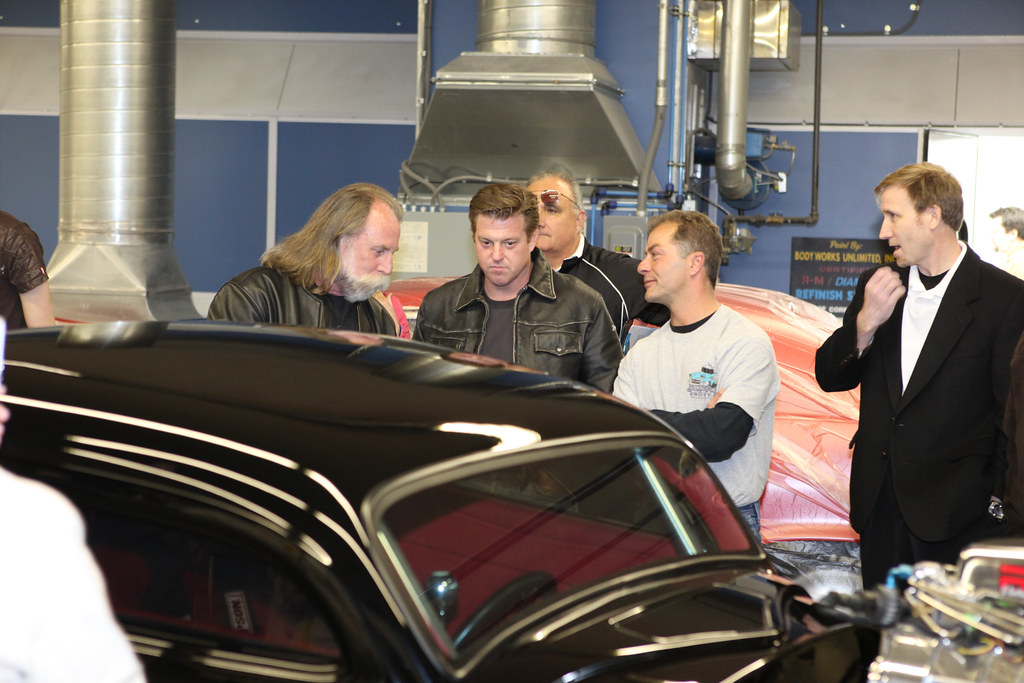
2. **The Signature Touch: Custom Wheel Design**One of the most fascinating aspects of Chip Foose’s custom builds is his philosophy regarding wheels. He firmly believes that each of his custom creations deserves its own uniquely designed set of wheels, an approach that ensures every vehicle is a cohesive, one-of-a-kind statement. This dedication to individuality means that no detail is too small, and the wheels themselves become integral to the car’s overall identity.
Consider the ongoing custom 1962 Corvette restomod project, which has been under construction for several years. This is a prime example of Foose’s meticulous process. He recently focused intensely on designing a custom wheel for this particular car, a blue 1962 roadster. It’s not just about selecting a wheel; it’s about crafting it from scratch to perfectly complement the vehicle’s transformed aesthetic and staggered fitment requirements.
Watching Chip in his element, using a variety of pens and ink to bring his wheel designs to life, is truly inspiring. He begins with a detailed sketch of the car, which he completed for this 1962 Corvette back in 2021. Then, he dives into the specific challenge of creating a wheel that enhances that vision. The precision and artistry involved in these hand-drawn concepts are what set his work apart, making each custom wheel a miniature masterpiece in itself.
Towards the end of the design process for the Corvette’s wheels, the drawing already looked great, and then Chip brought out the airbrush. This tool takes the drawing to the next level, adding depth and realism that truly brings the concept to life. Once finished, he holds it up for approval, ready to move forward with the next steps of fabrication.
Read more about: LeBron James’ Billion-Dollar Driveway: A Deep Dive into the NBA Champion’s Curated Car Collection
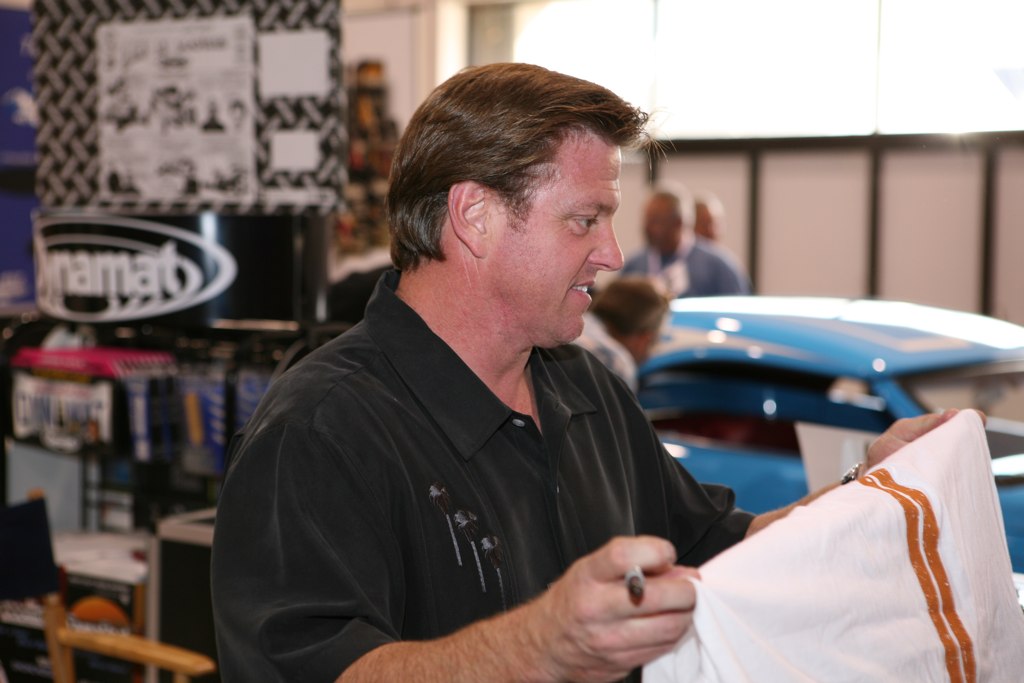
3. **From Sketchpad to SEMA: The Foose Design Process**Chip Foose’s design process is a mesmerizing blend of traditional artistry and modern technology, a journey that starts with the humble sketch and culminates in a fully realized automotive dream. During his “Overhaulin'” show days, fans eagerly anticipated the segment where he sketched out the design of the car before any wrench was turned. This foundational step is crucial, as it’s where the entire vision for a vehicle takes shape.
His current work on the 1962 Corvette illustrates this beautifully. After already having sketched the car itself, he moves on to custom designing the new wheels. He meticulously uses a variety of pens and ink, laying down lines and forms that begin to define the wheel’s character. The drawing progresses, looking great even before the final touches. Then, Foose brings out the airbrush, an instrument that takes the drawing to an entirely new level, adding depth, shadow, and a lifelike quality that makes the design pop off the page.
The modern age has certainly streamlined parts of this process. As Foose himself noted, in the past, he’d have done a drawing, made a Xerox copy, faxed it, and then waited for approval. Now, “I took a quick shot, shot it over to Gary. He’s already responded. He loves the wheel. Now I’ve sent it on to Eric at Wheelpros. Now it’ll get put into the computer.” This rapid feedback and digital refinement process is a game-changer.
Once Chip finishes the wheel design and the customer approves it, he sends it off to his friends at Wheel Pros. They then create a computer design version, which is further refined to perfection. Only once the customer signs off on that final version are the wheels then manufactured, a testament to the collaborative and precise nature of Foose’s visionary projects.
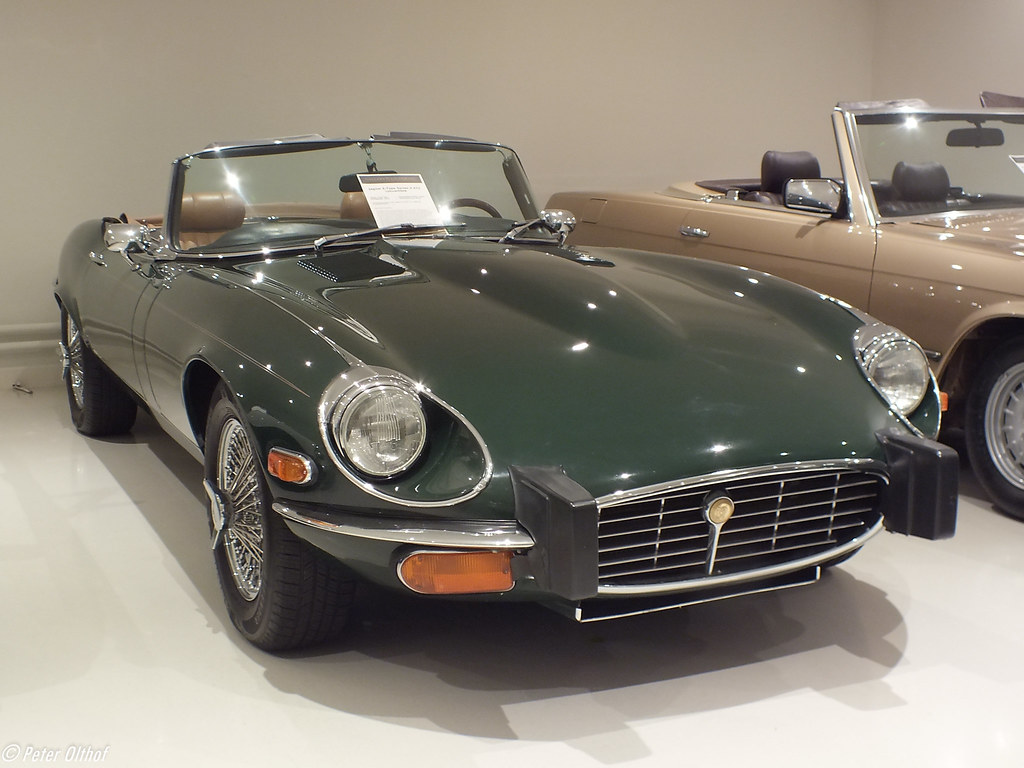
4. **Resurrection of a Legend: The 1974 Jaguar E-Type**Among the many impressive custom car projects Chip Foose has undertaken, his restoration and customization of a 1974 Jaguar E-Type stands out as a true testament to his ability to blend classic elegance with modern performance. This particular project exemplifies how Foose can take an already iconic vehicle and subtly yet significantly elevate its style, turning it into something truly extraordinary. His modifications are a masterclass in enhancing without overpowering.
Foose carefully retained the car’s original body and chassis, a respectful nod to its heritage, while simultaneously implementing crucial upgrades. He enhanced its handling and power by meticulously upgrading the suspension, brakes, and exhaust system, as noted “via Chip Foose.” This approach ensures that while the aesthetics are refined, the driving experience is also dramatically improved, marrying form with function in perfect harmony.
The aesthetic transformation was equally thoughtful. The car received a stunning new metallic silver paint job, giving it a fresh, contemporary gleam. Foose also added a custom front grille, imparting a more aggressive and modern look that subtly redefined its classic face. This visual tweak brought a more assertive presence to the classic lines, without losing the car’s inherent charm.
Inside, the upgrades continued with new leather seats, custom gauges, and a state-of-the-art audio system, effectively bringing the car’s interior into the 21st century. The result is a custom 1974 Jaguar E-Type that is a perfect blending of Jaguar style and Foose design, a breathtaking reinvention that honors its past while embracing the future. It truly showcases his talent for subtle yet impactful transformation.
Car Model Information: 1974 Jaguar E-Type Series III Numbers Matching! 11k Original Miles! Concourse Quality!
Sp: uk
Name: Jaguar E-Type
Caption: 1961 E-Type Series 1 3.8-Litre, the first production model of this open two-seater
Aka: Jaguar XK-E (North America),Jaguar V-12
Manufacturer: Jaguar Cars
Production: 1961–1974
Class: Sports car
Predecessor: Jaguar XK150
Related: Jaguar D-Type,Jaguar XJ13
Successor: Jaguar XJS
Layout: FMR layout
Assembly: Coventry,England
Designer: Malcolm Sayer
Categories: 1970s cars, 2+2 coupés, All Wikipedia articles written in British English, All articles with dead external links, All articles with specifically marked weasel-worded phrases
Summary: The Jaguar E-Type, or the Jaguar XK-E for the North American market, is a British front mid-engined sports car that was manufactured by Jaguar Cars Ltd from 1961 to 1974. Its sleek appearance, advanced technologies, high performance, and competitive pricing established it as an icon. The E-Type’s claimed 150 miles per hour (240 km/h) top speed, sub-7-second 0 to 60 mph (97 km/h) acceleration, largely unitary body construction, front and rear independent suspension with disc brakes, mounted inboard at the rear, and rack-and-pinion steering spurred industry-wide changes.
The E-Type was based on Jaguar’s D-Type racing car, which had won the 24 Hours of Le Mans for three consecutive years beginning in 1955.
The E-Type employed what was, for the early 1960s, a novel design principle, with a front subframe carrying the engine, front suspension and front bodywork bolted directly to the body tub. No ladder frame chassis, as was common at the time, was needed and as such the first cars weighed only 1,315 kg (2,899 lb).
It is rumored that, on its debut on 15 March 1961, Enzo Ferrari called it “the most beautiful car ever made”, but this statement is not fully confirmed. In 2004, Sports Car International magazine placed the E-Type at number one on their list of Top Sports Cars of the 1960s. In March 2008, the Jaguar E-Type ranked first in The Daily Telegraph’s online list of the world’s “100 most beautiful cars” of all time.
Get more information about: Jaguar E-Type
Buying a high-performing used car >>>
Brand: Jaguar Model: E-Type
Price: $110,800 Mileage: 11,946 mi.
Read more about: From Ashes to Asphalt: 14 Automotive Icons That Rose Again, A MotorTrend Deep Dive into Legendary Comebacks
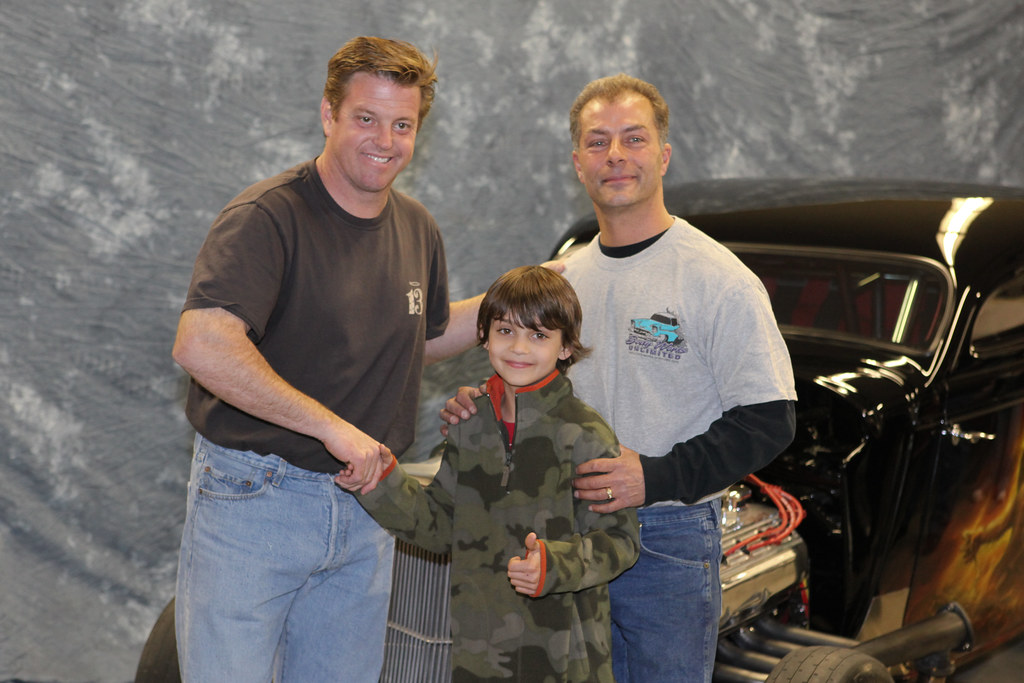
5. **Igniting the Passion: Early Life and Automotive Roots**Chip Foose’s legendary career didn’t just happen overnight; it was forged in the crucible of early exposure and an unyielding passion for automobiles. His journey began at a remarkably young age, at just seven years old, working alongside his father in their family shop. This hands-on experience, immersed in the world of custom cars, was the spark that ignited a lifelong fascination and shaped his entire future path.
Growing up in such a rich automotive environment provided Foose with an invaluable foundation. It was here, surrounded by the sights, sounds, and smells of wrenches turning and metal being shaped, that his natural talent and keen eye for design first became evident. This early immersion taught him not just the mechanics of cars, but the artistry and craftsmanship involved in transforming them, lessons that would prove invaluable.
The family shop was more than just a workplace; it was a classroom where Foose gained practical knowledge and developed an intuitive understanding of custom car design. This foundational period, spent side-by-side with his father, instilled in him a deep appreciation for the trade and set him on a trajectory toward becoming one of the most celebrated figures in automotive design. It was truly the beginning of a magnificent legacy.
His father, a pivotal figure, introduced him to custom car design and immersed him in the shop, teaching him craftsmanship and the fundamental principles of design. This early and consistent exposure cultivated a profound love for cars and laid the groundwork for his future successes, marking these years as truly formative for the young Chip Foose.
Read more about: John Penton: A Century of Speed, Innovation, and Enduring Legacy in Off-Road Motorcycling
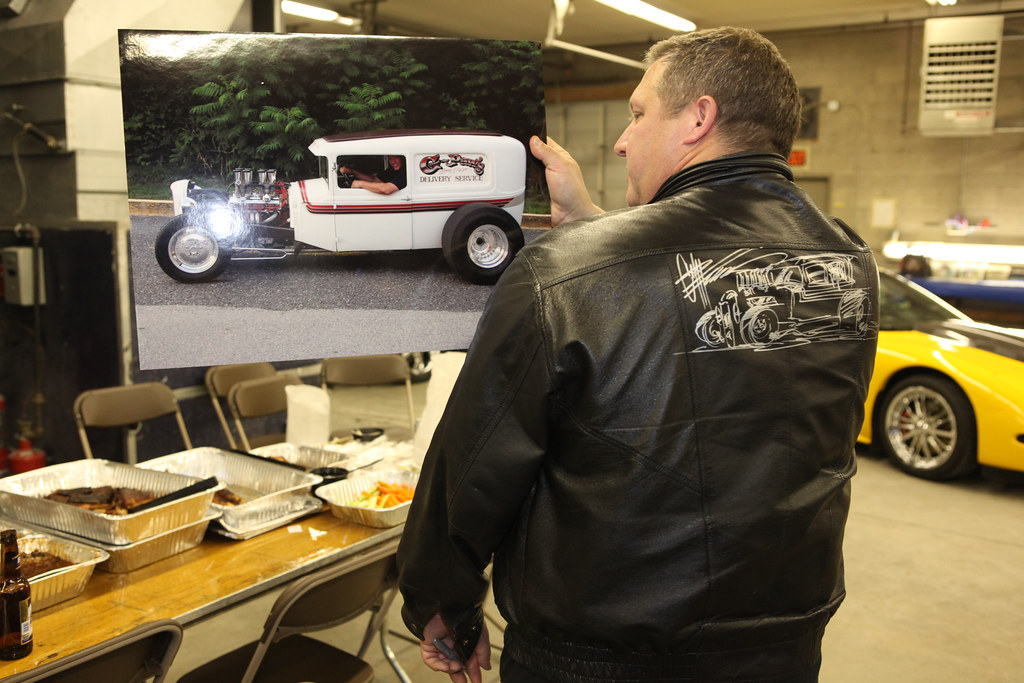
6. **Formative Years: Education and Early Professional Stints**While his father’s shop provided the initial spark and hands-on experience, Chip Foose understood the importance of refining his abilities through formal education. He attended the prestigious Art Center College of Design, a renowned institution for industrial design, and graduated with honors in 1990. This academic journey provided him with a solid theoretical and technical foundation, complementing his innate talent and practical skills.
Before establishing Foose Design, Chip gained valuable experience at several esteemed companies, further broadening his expertise and understanding of the industry. He honed his skills at Asha Corporation and Sterenberger Design, where he had the opportunity to refine his proficiency in custom car design. These roles were crucial stepping stones, allowing him to work on diverse projects and absorb different design philosophies, enriching his creative palette.
His significant break came when he joined Hot Rods by Boyd, a company that was already making waves in the custom car scene. Foose’s talent quickly shone through, and he eventually rose to become the company’s president. In this influential role, he not only contributed significantly to many iconic builds but also profoundly influenced the custom car design industry as a whole, preparing him for the monumental step of launching his own venture.
At the Art Center, Foose honed his skills and broadened his creative horizons, gaining the technical expertise that would define his custom car design career. This combination of hands-on learning and formal education proved to be a powerful blend, equipping him with a comprehensive skill set.
Read more about: Jack Betts, Versatile Actor from Broadway to ‘Spider-Man’ and Spaghetti Westerns, Dies at 96
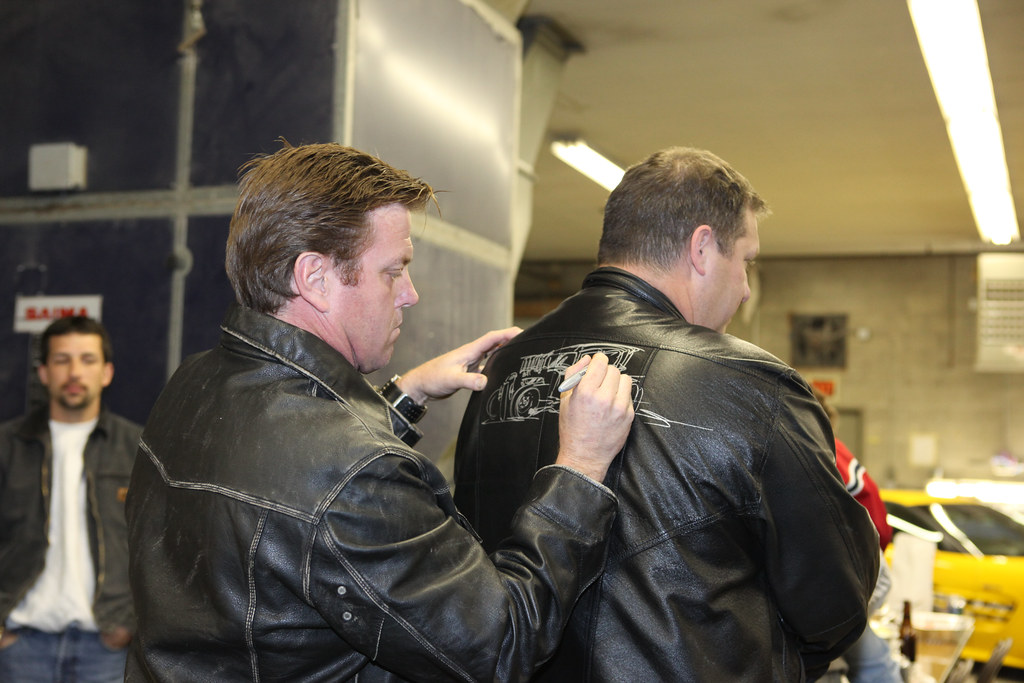
7. **The Birth of an Empire: Foose Design’s Inception**The year 1998 marked a pivotal moment in automotive history with the founding of Foose Design in Santa Barbara, California. This wasn’t just another custom car shop opening its doors; it was the launchpad for Chip Foose to introduce his distinctive vision and fresh perspective to the world of automotive and product design. The company quickly distinguished itself with an innovative approach that seamlessly blended art and engineering, making it a magnet for enthusiasts and industry professionals alike.
Foose Design offered a wide array of services right from the start, from meticulous illustrations that brought concepts to life on paper to the comprehensive construction of bespoke vehicles. This comprehensive capability, coupled with Chip’s established reputation, allowed the company to rapidly gain recognition. It became known as a destination where imaginative designs were transformed into tangible, high-performance realities, pushing the boundaries of what was considered possible in custom fabrication.
After a productive year in Santa Barbara, Foose Design relocated to Huntington Beach in 1999, signifying the beginning of a new, expanded chapter for the burgeoning enterprise. This move allowed for greater expansion and continued evolution of his design studio, catering to an ever-growing demand for his unique touch.
Over the last twenty years, Foose Design has solidified its position as a powerhouse in the automotive design world, celebrated for its unique blend of artistic vision and functional excellence. Every project, from the initial detailed drawings to the final exquisite build, continues to showcase Chip Foose’s careful attention to detail and his unwavering commitment to design perfection, truly setting the standard for custom automotive artistry.
Chip Foose’s journey didn’t happen in a vacuum; it was profoundly shaped by a constellation of influential figures and institutions that nurtured his innate talent. These guiding hands provided the foundational knowledge and encouragement that propelled him toward becoming the design icon he is today. Their impact extended far beyond technical skills, instilling in him a deep appreciation for craftsmanship and the artistry of custom car creation. It truly takes a village to raise a design god, and Foose was blessed with some of the best.
His father was undeniably the first and most significant mentor, introducing him to the world of custom car design at a tender age. By immersing him in the family shop, his father taught him not just the mechanics, but the fundamental principles of craftsmanship and design. This early and consistent exposure cultivated a profound love for cars that would become the driving force of his life. It was a hands-on education that money simply couldn’t buy, forging a bond between father and son over shared wrenches and dreams.
Adding another layer of profound influence was Alex Tremulis, a friend of Foose’s father renowned for his work with industry giants like Tucker and Ford Motor Company. Tremulis, recognizing the budding genius in Foose’s artwork, actively encouraged him to pursue a formal design career. His recommendation for the Art Center College of Design proved pivotal, setting Foose on a path to refine his abilities in an academic environment that complemented his practical upbringing. It was a critical validation of his artistic potential.
At the Art Center, Foose didn’t just attend classes; he truly honed his skills and broadened his creative horizons, gaining the advanced technical expertise that would define his unparalleled custom car design career. Further cementing his mentorship lineage, Gene Winfield, another renowned custom car designer who had also influenced Foose’s father, became a significant guide. Winfield’s innovative techniques and unique design philosophy left an indelible mark on Foose, helping him to develop the distinctive style that is now instantly recognizable. These mentors collectively provided Foose with an unshakeable foundation in custom car design, shaping his path to legendary status.
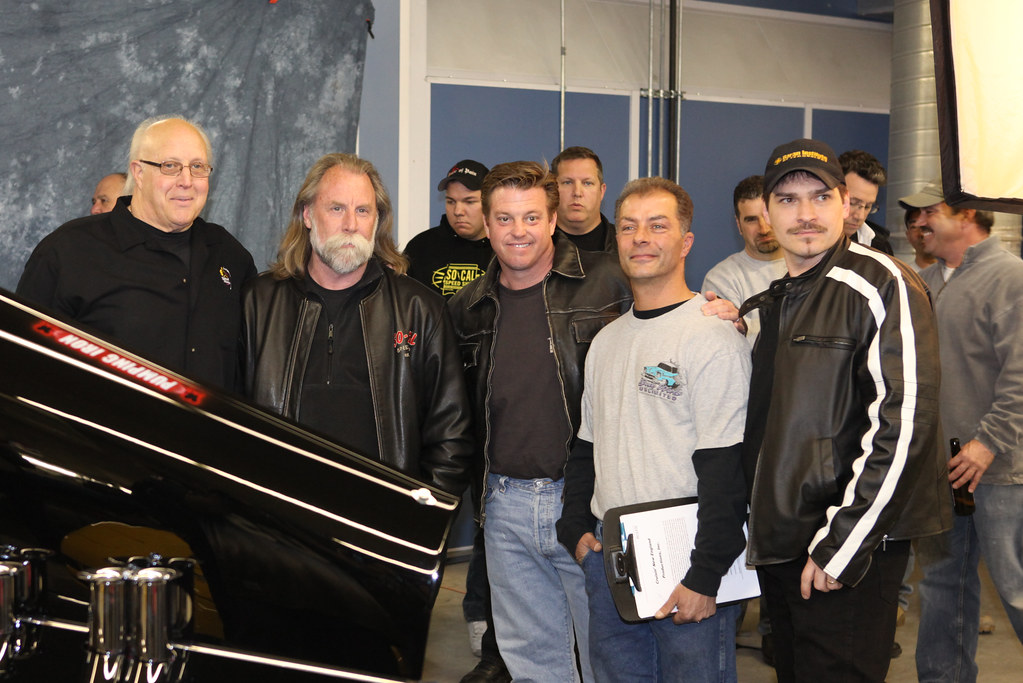
9. **Television Triumph: The ‘Overhaulin” Phenomenon**Building on this solid foundation of mentorship and education, Chip Foose soared to global prominence through his immensely popular TV show, ‘Overhaulin’.’ This captivating series, which featured nearly 90 automotive dream transformations, truly brought his exceptional skill in custom car design into living rooms worldwide. It wasn’t just a show for gearheads; it was a testament to passion, artistry, and the incredible emotional connection people have with their vehicles, all under the incredible pressure of a tight deadline.
‘Overhaulin” transcended the typical car show format by delving into the personal stories behind each vehicle, creating a narrative that was both engaging and deeply emotional. The dramatic reveals and incredible presentations made it a cultural phenomenon, turning ordinary, forgotten cars into extraordinary, cherished machines. Chip Foose’s starring role significantly enhanced his iconic status in the custom car design industry, making his face synonymous with automotive artistry and impeccable craftsmanship.
The show initially aired on TLC from 2004-2008, captivating audiences with its emotional stories and dramatic transformations. It later found a new home on Discovery Turbo from 2009-2015, expanding its global reach, and even saw relaunches on the Discovery Channel in 2012 and 2019, cementing its continued success and enduring appeal. Across these networks, ‘Overhaulin” consistently balanced dramatic effect with the real-life constraints of transforming vehicles, showcasing the immense talent and dedication required.
What truly cemented Foose’s reputation was his hands-on approach and meticulous design consultations, not only on the show but also with major automakers, adding an undeniable layer of authenticity to his on-screen persona. Watching Chip himself drive the completed cars during their awe-inspiring presentations was a highlight for countless viewers, reinforcing his status as an industry icon. ‘Overhaulin” offered an unforgettable journey into the world of custom car design, whether you were a hardcore enthusiast or a casual viewer just looking for a compelling story.
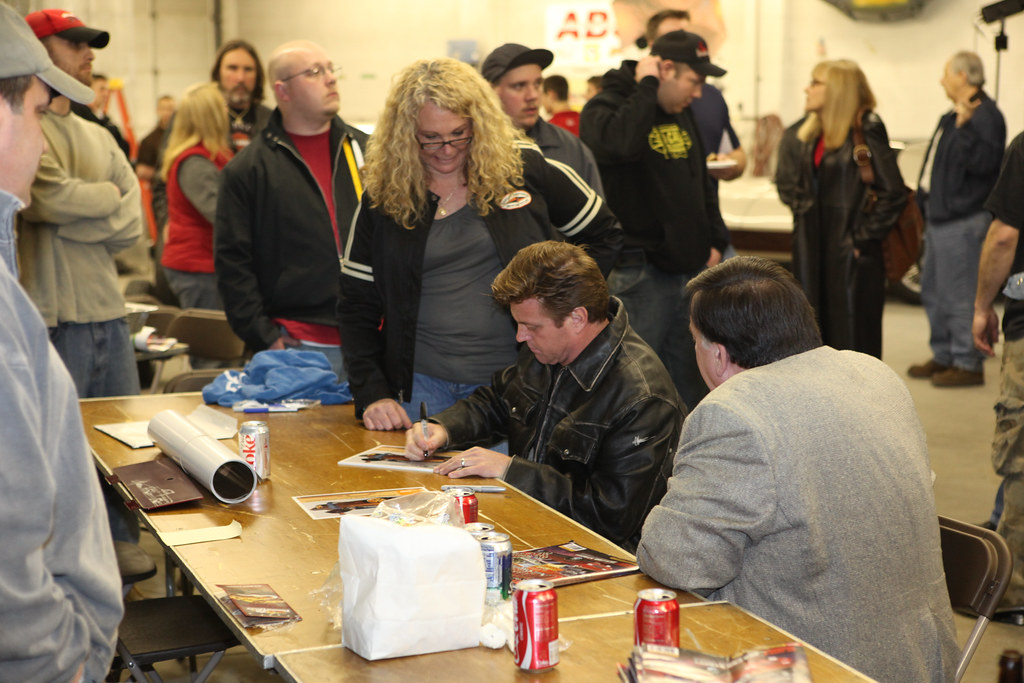
10. **Crafting Icons: The Boydster Legacy**Chip Foose’s extensive portfolio of major projects and groundbreaking redesigns stands as a testament to his unparalleled ability to transform both classic and contemporary vehicles into breathtaking works of art. Among his most celebrated creations are the iconic Boydster I and II, which perfectly encapsulate what became known as the ‘Boyd Look.’ These vehicles were not just custom cars; they were statements of design philosophy—smooth, sleek, and meticulously detailed, pushing the boundaries of hot rod aesthetics.
The Boydster I and II represent a pivotal moment in custom car design, embodying a level of refinement and artistic vision that was revolutionary. Their sleek lines and seamless integration of components earned Foose widespread recognition, solidifying his reputation within the industry. These masterpieces were instrumental in earning him recognition in the prestigious Custom Car Museum Hall and securing his place in the revered Hot Rod Hall of Fame, underscoring their profound impact on automotive culture.
Through these projects, Foose not only showcased his individual brilliance but also profoundly influenced the broader custom car design industry. His work on the Boydster models helped define an era, inspiring countless builders and designers to elevate their craft. They remain shining examples of how vision, skill, and an unwavering commitment to excellence can result in automotive legends that transcend mere transportation to become cherished pieces of art.
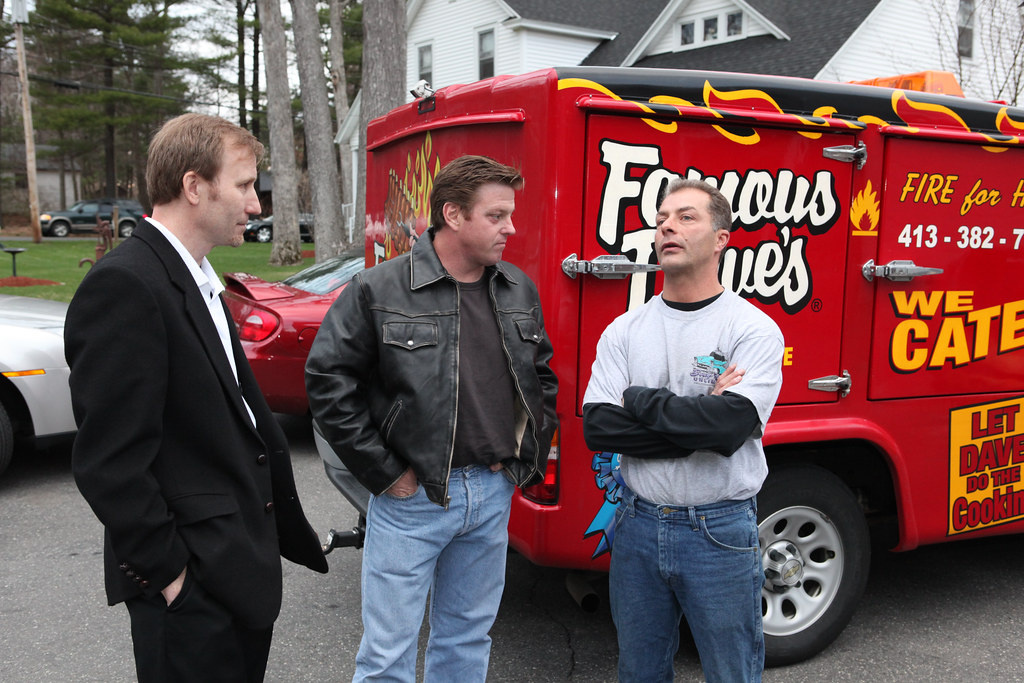
11. **Reimagining the Future: The DeLorean Redesign**Foose’s expertise in automotive redesign is further magnificently exemplified by his conceptual work on the DeLorean DMC-12. This cult classic, known for its distinctive gull-wing doors and stainless steel body, presented a unique challenge and opportunity for a designer of Foose’s caliber. His approach wasn’t about erasing the car’s identity, but rather about reimagining its inherent character, giving it a fresh, contemporary edge while respecting its iconic status.
Applying his unique sketching techniques, Foose approached the DeLorean with an artist’s eye, creating visually captivating interpretations that set his designs apart from any mere modification. He possesses an innate ability to see beyond the existing lines, to envision possibilities that are both groundbreaking and utterly cohesive with the vehicle’s original spirit. These redesigns showcase his profound understanding of proportion and his ability to enhance without overpowering.
His reimagined DeLorean concepts, through detailed drawings and renderings, offer a tantalizing glimpse into what the car could have been, or what it could be if produced today. These are not just fanciful sketches; they are fully thought-out design proposals that demonstrate his capacity to breathe new life into an already legendary machine, further cementing his reputation for turning the intriguing into the truly breathtaking.
Car Model Information: 1982 Delorean DMC-12
Name: DMC DeLorean
Alt: 1983 DeLorean
Caption: 1983 DeLorean
Manufacturer: DeLorean Motor Company
Production: January 21, 1981 – December 1982
ModelYears: 1981–1983
Assembly: Dunmurry
Designer: Giorgetto Giugiaro
Class: Sports car
BodyStyle: coupé
Layout: Rear-engine, rear-wheel-drive layout
Doors: Gull-wing doors
Engine: 2.85 L
Abbr: on
Powerout: 130 hp
Transmission: 5-speed manual ,3-speed automatic
Wheelbase: 2413 mm
Length: 4267 mm
Width: 1988 mm
Height: 1140 mm
Weight: 1233 kg
Sp: us
Categories: 1980s cars, All Wikipedia articles written in American English, Articles with short description, Automobiles with backbone chassis, Automobiles with gull-wing doors
Summary: The DMC DeLorean is a rear-engine, two-seat sports car manufactured and marketed by John DeLorean’s DeLorean Motor Company (DMC) for the American market from 1981 until 1983—ultimately the only car brought to market by the fledgling company. The DeLorean is sometimes referred to by its internal DMC pre-production designation, DMC-12, although this was not used in sales or marketing materials for the production model.
Designed by Giorgetto Giugiaro, the DeLorean is noted for its gull-wing doors and brushed stainless-steel outer body panels, as well as its lack of power and performance. Though its production was short-lived, the DeLorean became widely known after it was featured as the time machine in the Back to the Future films.
With the first production car completed on January 21, 1981, the design incorporated numerous minor revisions to the hood, wheels and interior before production ended in late December 1982, shortly after DMC filed for bankruptcy and after total production reached an estimated 9,000 units.
Despite the car having a reputation for poor build quality and an unsatisfactory driving experience, the DeLorean continues to have a strong following, driven in part by the popularity of Back to the Future. 6,500 DeLoreans were estimated to still be on the road as of 2015.
Get more information about: DMC DeLorean
Buying a high-performing used car >>>
Brand: DeLorean Model: DMC-12
Price: $129,950 Mileage: 3,145 mi.
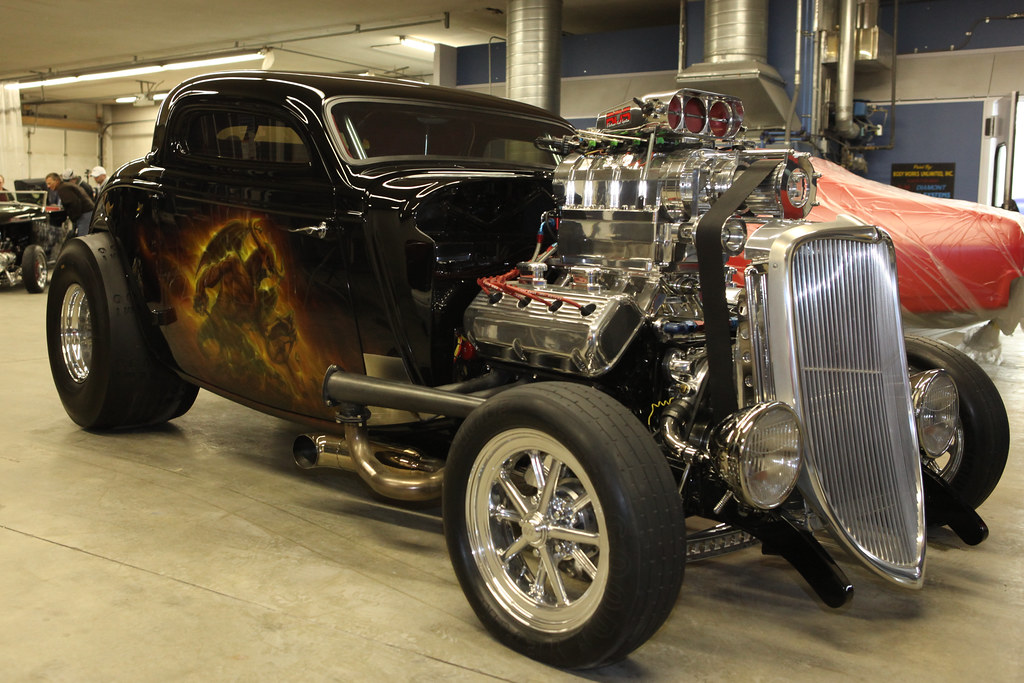
12. **Industry Leadership: Consulting and Ongoing Projects**At Foose Design, his renowned custom car design studio, Chip Foose continuously pushes the boundaries of what is possible in automotive artistry. The studio remains a vibrant hub of innovation, where conceptual ideas are meticulously transformed into tangible, high-performance realities. This commitment to pioneering design ensures that Foose Design continues to be a benchmark for excellence, inspiring both enthusiasts and industry professionals alike.
His profound influence extends far beyond his custom builds, as demonstrated by his valuable consulting work with the ‘Big Three’ automakers: Ford, General Motors, and Chrysler. This collaboration is a powerful testament to his innovative approach and the respect he commands within the mainstream automotive design world. His insights and creative vision have undoubtedly helped shape future designs and push the envelope for major production vehicles, proving his impact spans the entire industry.
Time and again, Foose’s redesigns consistently win accolades, including the highly coveted Hot Rod of the Year award, a clear indication of his enduring relevance and mastery. Praise from industry professionals and enthusiasts alike consistently underscores his talent for delivering intricate and visionary renderings. Every project undertaken by Foose Design, whether a grand custom build or a subtle refinement, reinforces his reputation as a true leader and visionary in the automotive design landscape.
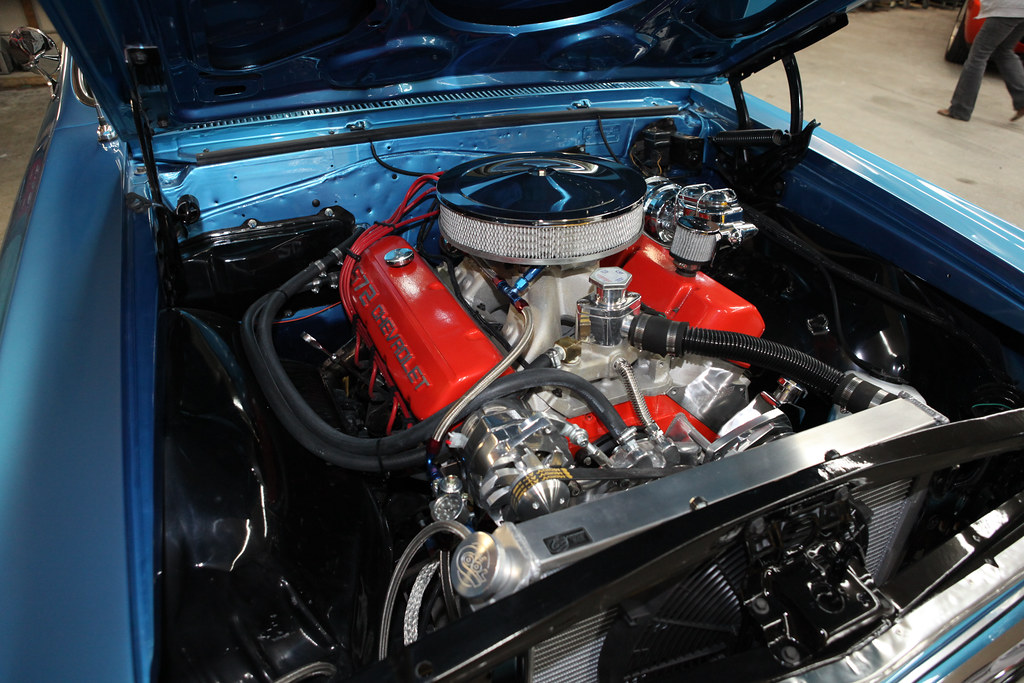
13. **A Trophy Case of Genius: Awards and Recognitions**Chip Foose’s unparalleled craftsmanship and boundless creativity are not merely appreciated by fans; they are recognized and celebrated through a staggering array of prestigious awards. Winning the America’s Most Beautiful Roadster (AMBR) Award multiple times since 1999 stands as a towering testament to his mastery in automotive design, a consistent achievement that few in the hot rod industry can rival. Each AMBR win solidifies his legendary status, proving his designs are not just beautiful, but truly iconic.
His impressive list of honors extends well beyond the AMBR, encompassing other highly respected accolades such as the Good Guys Trendsetter Award and the Street Rod of the Year Award. These recognitions further cement his profound influence and leadership within the custom car design world, highlighting his innovative contributions and setting benchmarks for the entire industry. It’s clear that his impact resonates deeply across various segments of automotive culture.
One of his most remarkable achievements is clinching the coveted Ridler Award multiple times, including a record-setting fourth win in 2015. This accolade, presented to the best in show at the Detroit Autorama, represents the pinnacle of custom car excellence, recognizing the finest and most innovative builds in the nation. Beyond these competitive triumphs, Foose’s enduring legacy was formally recognized in 2016 when he was inducted into the SEMA Hall of Fame, an honor reserved for individuals who have made truly significant and lasting contributions to the automotive industry.
Foose’s involvement in numerous award-winning projects has not only earned him individual recognition but has also consistently bolstered the reputation of every vehicle he touches. Each award and recognition serves as a powerful validation of his unwavering commitment to design excellence and underscores his pivotal, transformative role in shaping the very future of custom car design. His trophy case is not just a collection of awards; it’s a shining chronicle of a career defined by innovation, artistry, and an unyielding pursuit of perfection.
**The Enduring Legacy of a Design God**
Chip Foose’s extraordinary journey, from a young enthusiast sketching cars in his father’s shop to becoming a global icon in custom automotive design, is a powerful testament to the transformative power of passion, talent, and relentless dedication. He is more than just a builder; he is an artist, an innovator, and a visionary whose touch elevates the ordinary to the sublime. His meticulous process, groundbreaking redesigns, and the enduring influence of his mentors and his hit show ‘Overhaulin’’ have collectively redefined the very essence of custom car artistry. His legacy is not merely etched in metal and paint, but in the hearts of enthusiasts worldwide, continually inspiring new generations to dream bigger and build bolder. Chip Foose truly is, and will forever be, a design god.

